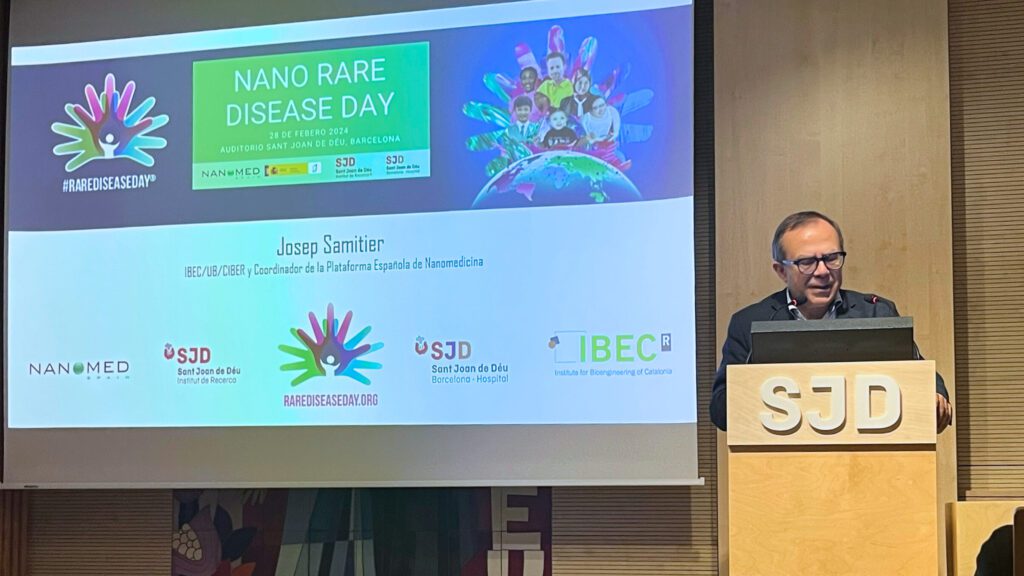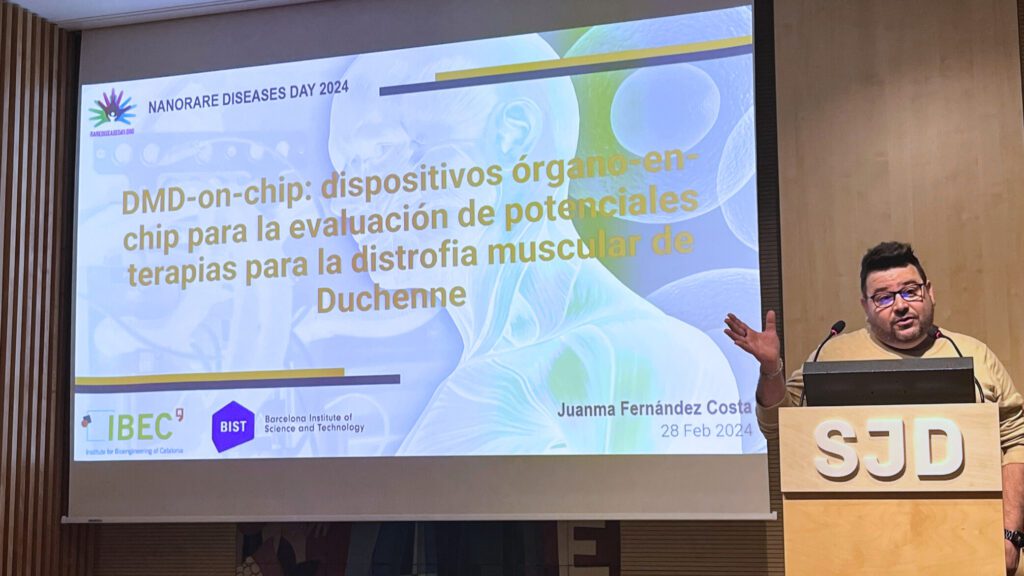Experts in nanomedicine from various fields have gathered today for the fifth consecutive year at Nano Rare Diseases Day. This event is co-organized by the NANOMED Spain platform, coordinated by IBEC, and SJD Barcelona Children’s Hospital, showcasing the latest advances in nanomedicine for the diagnosis and treatment of rare diseases.

Nano Rare Diseases Day took place today, an event organized within the framework of World Rare Disease Day, where the latest innovations in Nanomedicine were presented. During the conference, co-organized by the NANOMED Spain platform, coordinated by IBEC, and SJD Barcelona Children’s Hospital, experts from different fields presented the latest advances in nanomedicine for the diagnosis and treatment of rare diseases.
We aim to enhance health using science and technology at the nanoscale.
Josep Samitier
The event, attended by around 80 people in person and online, welcomed the perspectives of various stakeholders: researchers, business professionals, clinical practitioners, health authorities, patients, etc. More specifically, this year’s speakers focused on explaining the latest advances in the treatment of muscular dystrophies.
The conference commenced with opening remarks from Joan Comella, director of the Sant Joan de Déu Research Institute (IRSJD), and Josep Samitier, director of IBEC and scientific coordinator of the Nanomed Spain platform. In Samitier’s words: “We seek alliances and collaboration among the entities involved in the study and treatment of rare diseases: research centers, hospitals, and companies. We aim to enhance health using science and technology at the nanoscale.”
This was followed by a series of presentations moderated by Cristina Arimany Nardi from IBEC. The first presentation was delivered by Josep Samitier, who discussed the role of nanomedicine in the treatment and diagnosis of rare diseases. Nanotechnology ranks third among the so-called ‘enabling technologies,’ which enhance user performance and capabilities. Some applications of nanomedicine include organs-on-a-chip and ‘mini organs’ or organoids, both enabling in vitro studies on pathologies and personalized drug effectiveness for patients.

Investment in the development of drugs for rare diseases is limited.
Juanma Fernández
Juanma Fernández Costa, a senior researcher in the Biosensors for Bioengineering group at IBEC, presented his research on Duchenne muscular dystrophy. His work focuses on using organ-on-a-chip to develop models for these types of dystrophies, allowing the evaluation of potential therapies. Fernandez noted, “Investment in the development of drugs for rare diseases is limited. Creating models that help advance these discoveries will make it easier to lower costs.”
Other speakers in the conference included Marian Kober from the Institute of Materials Science of Barcelona (ICMAB-CSIC), Cecilia Jiménez Mallebrera from the IRSJD, Uliana Musokhranova from IRSJD, María de la Fuente from DIVERSA Technologies, and Begonya Nafría from IRSJD.





